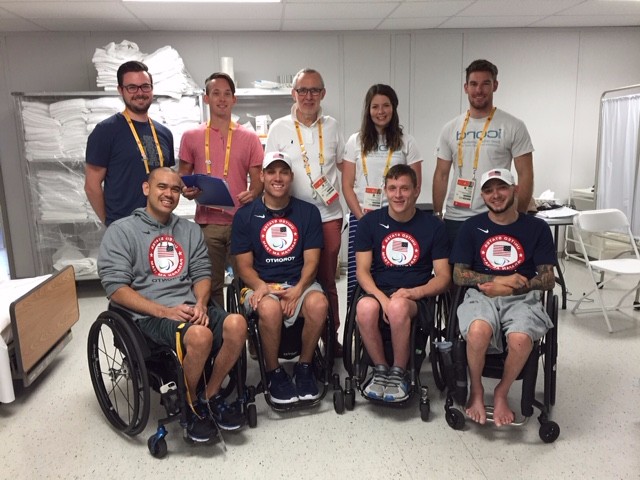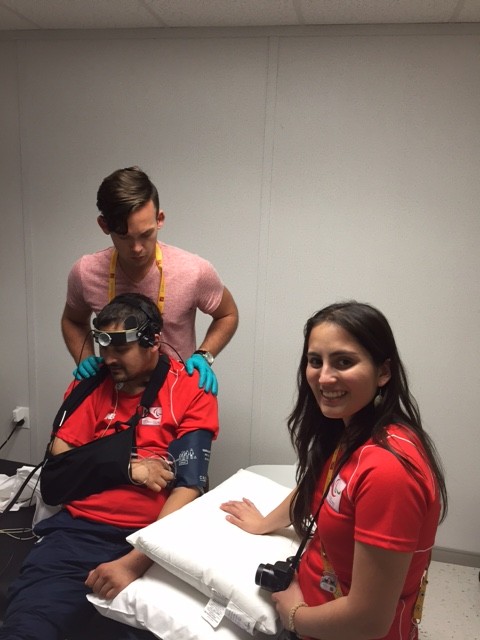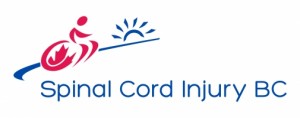
 In this issue, we tell you about a community-driven research project, share the summer adventures of some ICORDians, report on the Spinal Chord Gala, and introduce you to a new ICORDian. Plus: our regular column by former PhD student Dr. Jessica Inskip and some interesting events to add to your calendar.
In this issue, we tell you about a community-driven research project, share the summer adventures of some ICORDians, report on the Spinal Chord Gala, and introduce you to a new ICORDian. Plus: our regular column by former PhD student Dr. Jessica Inskip and some interesting events to add to your calendar.
 When John Chernesky suggested an idea for a study on spasticity to ICORD Principal Investigator Bonita Sawatzky, he didn’t think it would go further than a pleasant chat about research. Little did he know that it would lead to his becoming a co-investigator in a research study and taking his first unassisted steps in 20 years.
When John Chernesky suggested an idea for a study on spasticity to ICORD Principal Investigator Bonita Sawatzky, he didn’t think it would go further than a pleasant chat about research. Little did he know that it would lead to his becoming a co-investigator in a research study and taking his first unassisted steps in 20 years.
In 1993, Chernesky was in a car accident in which he sustained an incomplete spinal cord injury that left him a quadriplegic. It was not an easy recovery, but he says it’s something he has gotten past. Today he works as the Lead for Consumer Engagement at the Rick Hansen Institute. He is also a regular at PARC, which offers a gym and the opportunity for members of the SCI community to connect with researchers at ICORD.
Like more than three quarters of people with SCI, Chernesky suffers from spasticity, a condition that causes muscle spasms, pain, fatigue, and many other complications. “For me, spasticity is an unwanted over-activation of my body. Almost as if someone else is in control of my movement,” says Chernesky. It can also result in increased muscle tone and stiffness, which can make it feel like “you’re trying to drive your car with the parking brake on.”
Dr. Sawatzky has studied spasticity extensively and has been looking at the potential of vibration as a treatment. In fitness, whole body vibration is thought to stimulate muscle activity and build strength. The therapy is usually administered on a platform on which the subject stands. The apparatus vibrates at a range from 20-50 Hz, a shaking similar to being on an airplane touching down for an extended period of time.
For people with spasticity, the hope is that this stimulation might reduce the hyper-excitability in muscles.
“If you have pain, you can rub a brush over the area and that can decrease pain or spasms in some people because the stimulation seems to be overriding the nerve responses,” Dr. Sawatzky explains. Part of her research is to determine whether the same principle of overwhelming the nervous system to reduce unwanted muscle activity.
In a short study with Dr. Sawatzky using the vibration wave platform at ICORD, John found that he was getting positive results from the sessions. “I found that certain frequencies tended to work better, so I wanted to explore that,” says Chernesky.
It was shortly after that study that Chernesky and Dr. Sawatzky as well as Dr Ben Mortenson began discussing the possibilities of doing more formal research. In the summer of 2014, Alison Williams, a PARC work-learn student and Kinesiology undergrad, was brought in to coordinate the project as a directed-study as part of her degree.
Along with evaluating the effects of vibration, the study was designed to allow participants to determine what worked best for them. “The participants would go on the platform two to three times a week, and they could pick the frequency, amplitude and amount of time,” says Williams, lead author on the study. “Because it’s such a non-invasive treatment for spasticity, we wanted to see if we could have people do their own self-directed treatment plans as a model for using this in a community setting.”
For Chernesky, this allowed him to modify the research to his own needs and better understand his own condition.
“I think this is exactly what ICORD strives for: where people with SCI are pushing us researchers, saying ‘This is what’s important to me. I want to learn more about it,’” says Dr. Sawatzky. “It’s meaningful research to them and maybe they get some clinical benefits.”
The benefits of vibration therapy for spasticity aren’t yet clear. A second participant with incomplete quadriplegia gained some improvement. However, a third individual with a complete paraplegia gained no improvement. More study is required to learn how the treatment works with what type of injury.
For Chernesky, however, the results were dramatic. One day late in the study, it all seemed to be feeling right. “It was a combination of everything. The diet was right, the vibration hit the nail on the head,” says Chernesky. “I was taking some steps with the parallel bars and I felt like I didn’t need them, so I let go and walked.”
This was the first time since his accident that Chernesky had taken an independent step.
“It was unreal,” says Williams.
Dr. Sawatzky, who wasn’t present on the day, says it was even emotional for her to watch the footage.
Chernesky hasn’t tried walking since that day, but he says the experience has built confidence in his daily life. “The other day I went to fill up my car with gas and I was in a rush,” he says. “I just stood up against the car and paid at the pump, and I knew I didn’t have to worry about falling.”
Beyond the walking, the study was a new experience for Chernesky, who will be a co-author on the paper, in which he could test his ideas and work closely with the researchers.
“This is a building where everyone who works here has dedicated their careers to improving the lives of people with spinal cord injuries,” says Chernesky. “If they’re going to make my life better, the least I can do is help them make my life better.”
A poster on the study was presented at the American Congress of Rehabilitation Medicine in Dallas, Texas, in October and the paper will be submitted to journals next year.
If you’re interested in learning more about participating in other ICORD studies please visit our website.
 We’ve received so much great feedback about the 2015 Spinal Chord Gala that took place on October 25. This year’s event was our most successful ever, raising more than $42,000 to support ICORD and Vancouver Cantata Singers.
We’ve received so much great feedback about the 2015 Spinal Chord Gala that took place on October 25. This year’s event was our most successful ever, raising more than $42,000 to support ICORD and Vancouver Cantata Singers.
We are very grateful to our presenting sponsor Medtronic for their continued support.
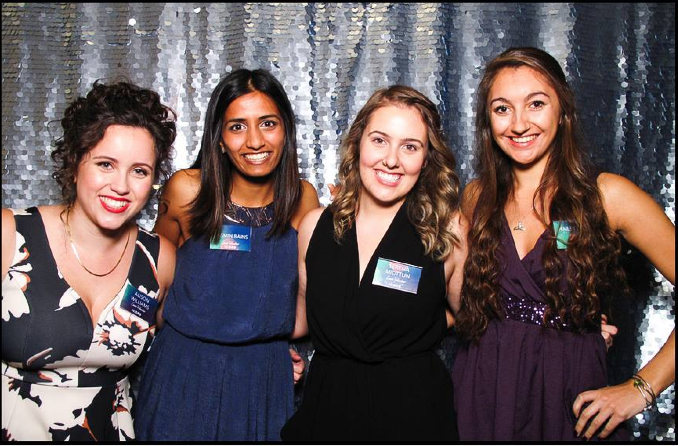 We were happy to welcome 230 guests to enjoy hors d’oeuvres by Lazy Gourmet, oysters by Curious Oyster, and desserts by Bella Gelateria, Gusto Chocolates, La Macaronette, Sweet Obsession and Archimallows. The cocktail bar by Kevin Brownlee of AnnaLena was very popular, and people clearly enjoyed the 33 Acres craft beer (we’ve never sold out of beer before).
We were happy to welcome 230 guests to enjoy hors d’oeuvres by Lazy Gourmet, oysters by Curious Oyster, and desserts by Bella Gelateria, Gusto Chocolates, La Macaronette, Sweet Obsession and Archimallows. The cocktail bar by Kevin Brownlee of AnnaLena was very popular, and people clearly enjoyed the 33 Acres craft beer (we’ve never sold out of beer before).
Sunflower Florist made the atrium look beautiful again. The performances by Vancouver Cantata Singers were flawless, and the smooth jazz between choir by Daryl Jahnke, Bernie Arai and Laurence Mollerup was perfect for the party.
See this fantastic event for yourself: spend a few minutes checking out all the great shots by Edward Lai Photography, Jesse Read and the Butter Photo Booth.
Thank you to all our sponsors. Your generosity is truly appreciated.
Two ICORD trainees headed to Montreal this past summer – not for the bagels, but for the Multiple Sclerosis Society’s endMS Summer School.
Multiple sclerosis (MS) is an autoimmune disease that damages myelin (the protective covering around nerves in the brain and spinal cord–see What is Myelin below). People living with MS may experience symptoms such as fatigue, impaired coordination and sensation, and muscle weakness.
Dr. Philip Ly, a post-doc fellow in Dr. Catherine Pallen’s lab, and Greg Duncan, a PhD student in Dr. Wolfram Tetzlaff’s lab, were excited to be a part of the endMS program, a competitive, week-long education program that trains future MS researchers from a variety of disciplines.
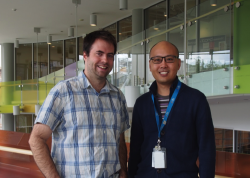 Mornings at the school were reserved for academic sessions, in which Philip and Greg learned laboratory techniques to improve their understanding of the debilitating condition.
Mornings at the school were reserved for academic sessions, in which Philip and Greg learned laboratory techniques to improve their understanding of the debilitating condition.
Greg was most excited to have the opportunity to work with scientists from other fields. “One morning, there were two pathologists talking and showing MRI scans and correlating them with tissue samples,” said Greg. “I look at MS from a cell level generally, so seeing the correlation provided a new and interesting perspective.” Greg hopes to apply his newfound knowledge and histopathology techniques to his research at ICORD.
The afternoons were dedicated to clinical applications of research in hospitals. For Dr. Ly, the most compelling moment was meeting individuals living with MS for the first time. “Having people with MS sit in front of me and tell their stories just opened up my mind to see how cellular-level events can have such devastating effects,” he said, “not just on patients but on family members and loved ones.”
Dr. Ly’s current research focuses on cell signaling and understanding how one molecule, protein-tyrosine phosphatase alpha (PTP-alpha), influences myelination and maturation of cells in the spinal cord. He hopes to find and isolate a compound that can be used to promote remyelination in lesion areas caused not only by MS but by spinal cord injury as well to improve the quality of life for people with neurological disorders.
What is myelin?
Myelin is a type of cell that covers and support neurons located in the central nervous system. Myelin helps speed the conduction of nerve signals to and from the brain by acting as a form of insulation. In MS, the body’s own immune system attacks the myelin in the individual’s body. This leaves the nerves uninsulated and unable to pass messages between the brain and body.
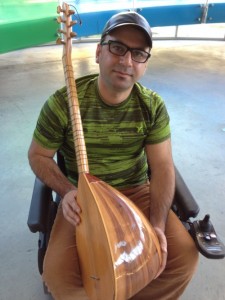 “I had to start from zero,” says Adel Othman, who left his home in northern Syria and came to Canada four years ago because of civil war. He arrived having to learn a new language and different way of life. But having made a new home in Canada, Adel, 33, is happy that he has been able to give back by helping settle refugees from Syria as a volunteer for the Immigration Services Society of British Columbia.
“I had to start from zero,” says Adel Othman, who left his home in northern Syria and came to Canada four years ago because of civil war. He arrived having to learn a new language and different way of life. But having made a new home in Canada, Adel, 33, is happy that he has been able to give back by helping settle refugees from Syria as a volunteer for the Immigration Services Society of British Columbia.
ICORD is thrilled that on December 7, the Blusson Spinal Cord Centre atrium will be the venue for a lunchtime concert given by Adel to raise money for ISSofBC, which is assisting in the settlement of Syrian refugees coming to Vancouver.
Adel will be singing and playing the tambour, a stringed instrument that has several different incarnations across Mediterranean and Middle East. He began learning the instrument in 2002 shortly after he suffered a spinal cord injury. His music brought him to Lebanon, where he worked with doctors and did musical therapy to help children recover from illness and trauma.
Adel performs traditional songs and original compositions. He sometimes improvises songs from a theme, often about his hope for peace after war, singing both in Arabic and Kurdish. Adel comes from northern Syria, which is the country’s Kurdish region.
“When I was hurt people helped me,” says Adel. “My dream is to help people. And it will be a lot of work for refugees starting over in Canada.”
Adel has seven brothers and two sisters most of whom have been spread around the world, searching for safer places to raise their families. So he has a keen understanding of the difficulty in adjusting to a new home in a search for safety for one’s family. In his volunteer work with ISSofBC, he has helped newcomers find apartments, register for services, and look for jobs.
Since coming to Vancouver, Adel has become a BSCC regular, volunteering at PARC and participating in research studies, and he feels has adapted to his new life. “Because accessibility for people in wheelchairs is so much better here, I see my future in Canada,” says Adel.
The concert is on Monday, December 7 at 12:00 p.m. Everyone is welcome and donations will be taken for ISSofBC. Click for more information.
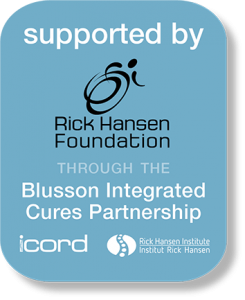 Alfiya Battalova works at SCI BC as a Peer Recruitment Coordinator. Her position is funded in part by the Blusson Integrated Cures Partnership. ICORD’s Simon Liem sat down with Alfiya recently, to get the scoop on her new job:
Alfiya Battalova works at SCI BC as a Peer Recruitment Coordinator. Her position is funded in part by the Blusson Integrated Cures Partnership. ICORD’s Simon Liem sat down with Alfiya recently, to get the scoop on her new job:
SL: What is a Peer Recruitment Coordinator and what does the job entail?
AB: As a Peer Recruitment Coordinator, I promote the studies that ICORD researchers are currently recruiting for, I answer questions about the studies, and connect people who are interested in joining the studies with the researchers.
SL: When did you start the position and how has it been going so far?
AB: I officially started this position in February of 2015. There has been a lot of learning. As someone with a background in academic research, I understand the inner workings of a research project, but I had to learn more about the clinical research in general and SCI research in particular. It is certainly very different from the social science research I am mostly used to.
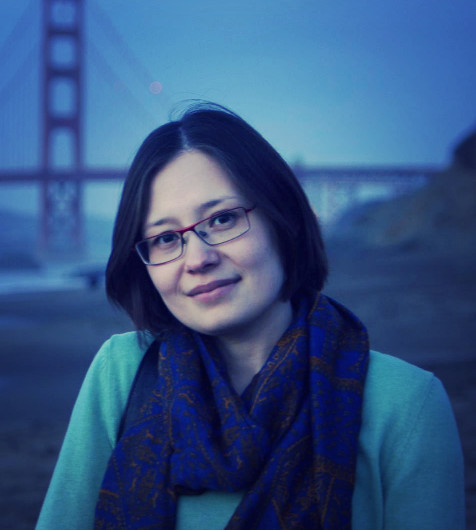 SL: How does your work fit in to the relationship between SCI BC, ICORD, and the Blusson Spinal Cord Centre?
SL: How does your work fit in to the relationship between SCI BC, ICORD, and the Blusson Spinal Cord Centre?
AB: The connection between all three is essential. As an organization that provides community services, SCI BC plays an important role in making research more visible and accessible to our members with spinal cord injuries. Ultimately, the impact of both research and community services can be enhanced when they work in collaboration.
SL: What is the importance of research participation in helping the SCI community at large?
AB: The importance of research participation is essential for the advancement of SCI research in the areas of new technologies, treatments, and services. No advancement in these areas is possible without an active involvement of people with SCI.
SL: What are some of the common questions you get asked about participating in research?
AB: People always want to know how much time they will need to commit to a specific study, how often they will have to commute to the research site, and what they will be getting out of it. The last question is the hardest to answer because the impact of a research study might not be immediate and tangible for an individual involved.
SL: What should people know before participating in research?
AB: Research studies vary greatly in terms of the eligibility criteria, the purpose, and the time commitment, so if someone does not qualify for one study, they might be a perfect candidate for a another one.
SL: What do you find most difficult about your job?
AB: It is very hard to tell people they do not qualify for a certain study, especially if these individuals made an effort to reach out to me. Participants’ enthusiasm is very important for the success of any study, and turning down people who are interested in contributing to research but do not qualify is hard.
SL: What do you like best about your job?
AB: I like making connections with people and talking about their interests and needs when it comes to research. I coordinate SCI BC’s peer events in the Vancouver area, and that helps me foster existing connections and build the new ones.
Do you have a spinal cord injury? Are you interested in taking part in ICORD research? You can see our currently-recruiting projects here or contact Alfiya to be added to her list.
 Every year, students from W. L. McLeod Elementary School in Vanderhoof, BC compete in an annual ultimate frisbee tournament to support spinal cord injury research at ICORD.
Every year, students from W. L. McLeod Elementary School in Vanderhoof, BC compete in an annual ultimate frisbee tournament to support spinal cord injury research at ICORD.
This year, a record-breaking 200 students participated in the tournament. Organizer Kim Worthington wrote to tell us about it: 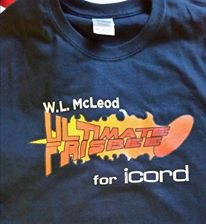 “It appears we’ve had a banner year. There were approximately 200 kids taking part. Our concession even sold out! I don’t ever remember running out of concession food before. The weather was perfect and everyone was so pleased with how the day played out.”
“It appears we’ve had a banner year. There were approximately 200 kids taking part. Our concession even sold out! I don’t ever remember running out of concession food before. The weather was perfect and everyone was so pleased with how the day played out.”
The first tournament was originally organized in honour John Ryan, who arm-cycled across Canada in 1999 to raise funds for spinal cord research. His father-in-law was a retired principal of the elementary school. Vanderhoof citizens were highly involved in raising money for John’s cause, and W.L. McLeod Elementary School organized the first tournament in 1999 as a fundraiser.
Since then, 17 tournaments have been organized, with Grade 4 to 6 students from neighbouring schools competing in friendly matches. Some years, students were surprised by special visits from John Ryan himself, as well as his friend Trevor Linden!
In honour of the fundraising done by these dedicated students, the W.L. McLeod Trainee Award for best research poster presented by an ICORD trainee at the Masters level is presented at our Annual Research Meeting each spring.
What the heck is a post-doc?
A last column by Dr. Jessica Inskip, postdoctoral fellow at St. Paul’s Hospital.
You may have heard people around ICORD talking about postdocs. A postdoc, or postdoctoral fellow, is a professional researcher who has completed their PhD, and who continues to do research. Researchers normally take a postdoc position in a different research laboratory to where they did their PhDs. It is a way to gain new skills from different experts – and sometimes a way to travel and live in another country for a while.
A postdoc was traditionally a stepping-stone for an academic faculty position, as a professor. This extended training allows postdocs to gain more experience in faculty-type roles, including supervising students, writing grants, reviewing papers, and doing independent research. These days, however, there are very limited faculty positions, and many postdocs end up choosing different roles after their postdoc – either in the university or in the public or private sectors. A postdoc position tends to be about 2-3 years. While the pay is better than being a student, the salary is nothing to write home about (our parents sometimes wonder why we don’t just get a real job).
Looking back, a majority of faculty members say that their postdoctoral years were the best of their research careers. Indeed, there is a sense of freedom in being able to focus on doing research without having to complete a thesis, attend classes (or pay tuition!).
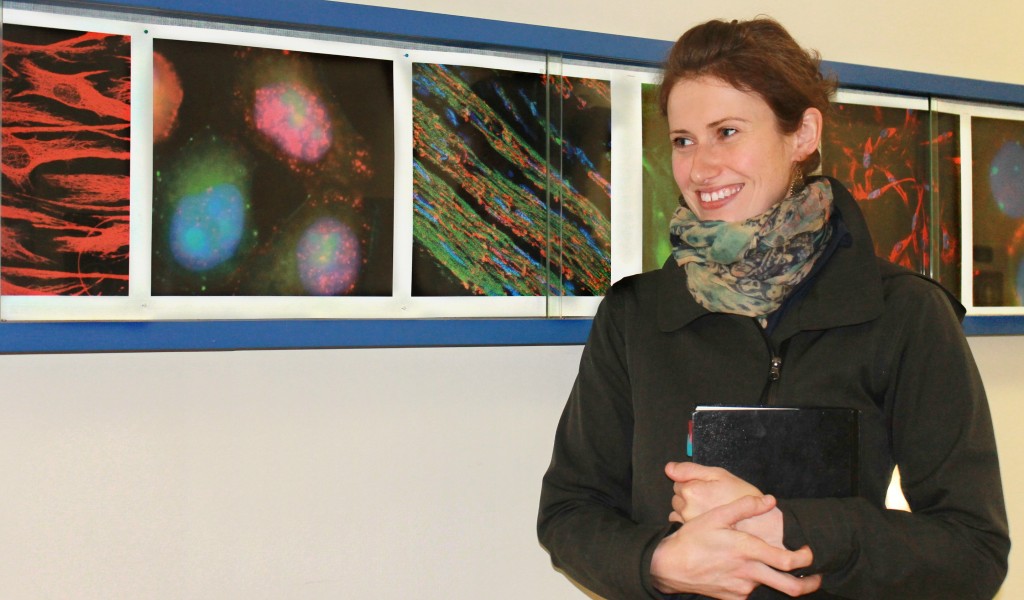
We hope you’ve enjoyed hearing from Jess over the past five issues. We wish her well in her future career, whatever she ends up doing!
 In August, the Krassioukov Lab visited the Toronto 2015 Parapan American Games to conduct the Parapan Games Cardiovascular Health Clinic. Dr. Andrei Krassioukov and his team were testing some of the most elite athletes in the world to discover how spinal cord injuries affect cardiovascular and brain health. Here are a few photos from the team’s adventures (click images to enlarge).
In August, the Krassioukov Lab visited the Toronto 2015 Parapan American Games to conduct the Parapan Games Cardiovascular Health Clinic. Dr. Andrei Krassioukov and his team were testing some of the most elite athletes in the world to discover how spinal cord injuries affect cardiovascular and brain health. Here are a few photos from the team’s adventures (click images to enlarge).
Spinning People Into Neuromotion: Upper-body Programs for SCI (SPIN UP for SCI)
Dr. Tania Lam and her research team are launching a pilot study to test the benefits of arm-spin classes on aerobic fitness and core stability (including sitting balance and trunk muscle activation patterns). The goals of this study are to examine to the feasibility, acceptance, and potential effects of group upper-body spin classes on physical fitness and function. Why should you participate in this study? Everyone knows that aerobic fitness is important for your health. Here is a great, new way to get your work-out in, while participating in research! Click here for more information.
Gala connection: the arm-cycling equipment that will be used in this study was purchased with funds from the 2014 Spinal Chord Gala.
Holiday Auction
Full of amazing treats and gifts for the holidays, SCI BC’s Holiday Auction will raise much-needed funds for SCI BC’s programs and services. All of your shopping dollars go directly to help people with spinal cord injury and related physical disabilities adapt, adjust, and thrive, whether they are dealing with a new injury or living and aging with a disability.
 Save the Date: Praxis 2016, April 25-27
Save the Date: Praxis 2016, April 25-27
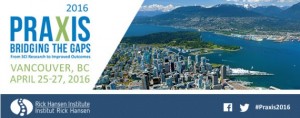 Hosted by the Rick Hansen Institute, Praxis 2016 is an international conference focused on identifying and overcoming barriers to translating research into outcomes for spinal cord injury.
Hosted by the Rick Hansen Institute, Praxis 2016 is an international conference focused on identifying and overcoming barriers to translating research into outcomes for spinal cord injury.
Join us from April 25-27, 2016 in beautiful Vancouver, Canada. Come prepared for three days of engaging discussions and insightful learnings from peers and colleagues across the entire SCI research and health care continuum. Leave the conference with tangible action items that will help move SCI research and clinical practice forward.
REGISTRATION AND POSTER SUBMISSION GUIDELINES COMING SOON!
Learn more
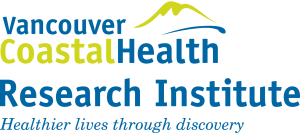 Together we can create a healthier tomorrow through research
Together we can create a healthier tomorrow through research
The Vancouver Coastal Health Research Institute (VCHRI) is launching a research awareness campaign to promote and support research at VCH.
As part of the campaign, VCHRI is developing a monthly community newsletter, In It Together, that will bring attention to VCH clinical trials, research studies, and the essential role of the patient participants. The electronic newsletter aims to inspire interested individuals to find out more about research at VCH and participation opportunities by visiting vchri.ca/participate. Stories will feature clinical trials and studies at VCHRI and will highlight the potentially life-changing discoveries and the important role of volunteer participants.
We encourage you to sign up at vchri.ca/InItTogether and to help connect people you know to research. Together we will create a healthier tomorrow through research–be part of the discovery.
 ICORD and the Rick Hansen Institute are working together to identify new treatments for SCI and apply existing treatments for other neurological disorders, injuries and diseases to SCI. Funded by the Rick Hansen Foundation, the Blusson Integrated Cures Partnership provides ten years of stable funding for several multi-year research projects as well as new faculty positions within ICORD, international exchanges to encourage collaboration, research-related events (like the Annual Research Meeting and seminar series) and a consumer engagement strategy which aims to provide people with SCI and their supporters with evidence-based information about the healthcare, services and resources available to best support recovery after SCI and increase consumer involvement in the research process. We are very grateful for this generous support.
ICORD and the Rick Hansen Institute are working together to identify new treatments for SCI and apply existing treatments for other neurological disorders, injuries and diseases to SCI. Funded by the Rick Hansen Foundation, the Blusson Integrated Cures Partnership provides ten years of stable funding for several multi-year research projects as well as new faculty positions within ICORD, international exchanges to encourage collaboration, research-related events (like the Annual Research Meeting and seminar series) and a consumer engagement strategy which aims to provide people with SCI and their supporters with evidence-based information about the healthcare, services and resources available to best support recovery after SCI and increase consumer involvement in the research process. We are very grateful for this generous support.
Thanks for reading this issue of the ICORDian–we hope you enjoyed it! Please subscribe and have future issues delivered to your email box. If you have any comments about this issue or suggestions for future ones, please contact us.

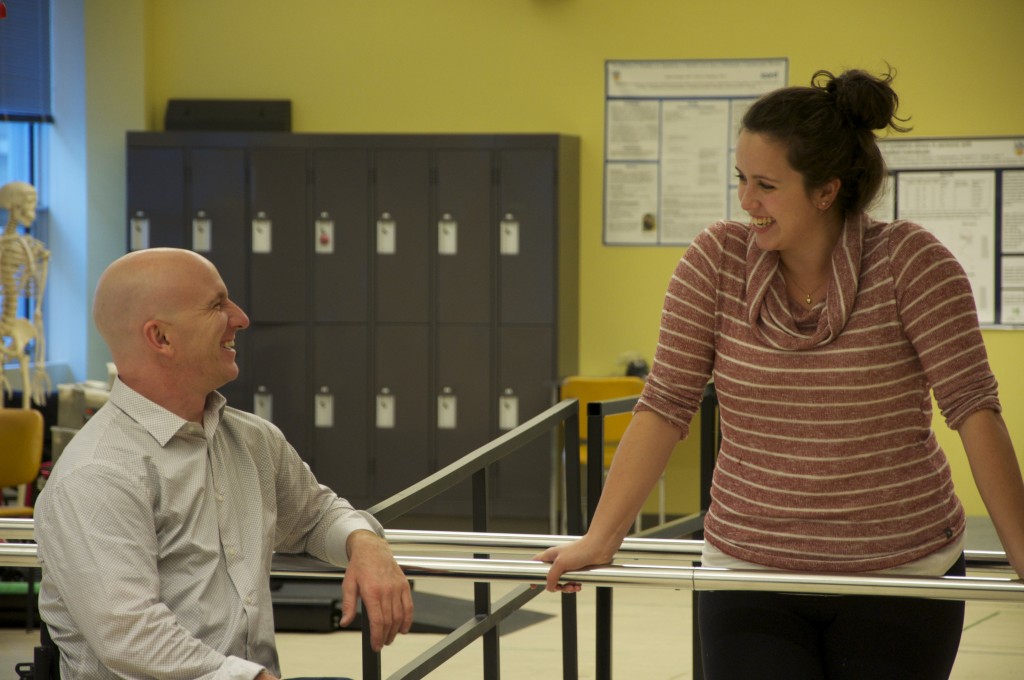
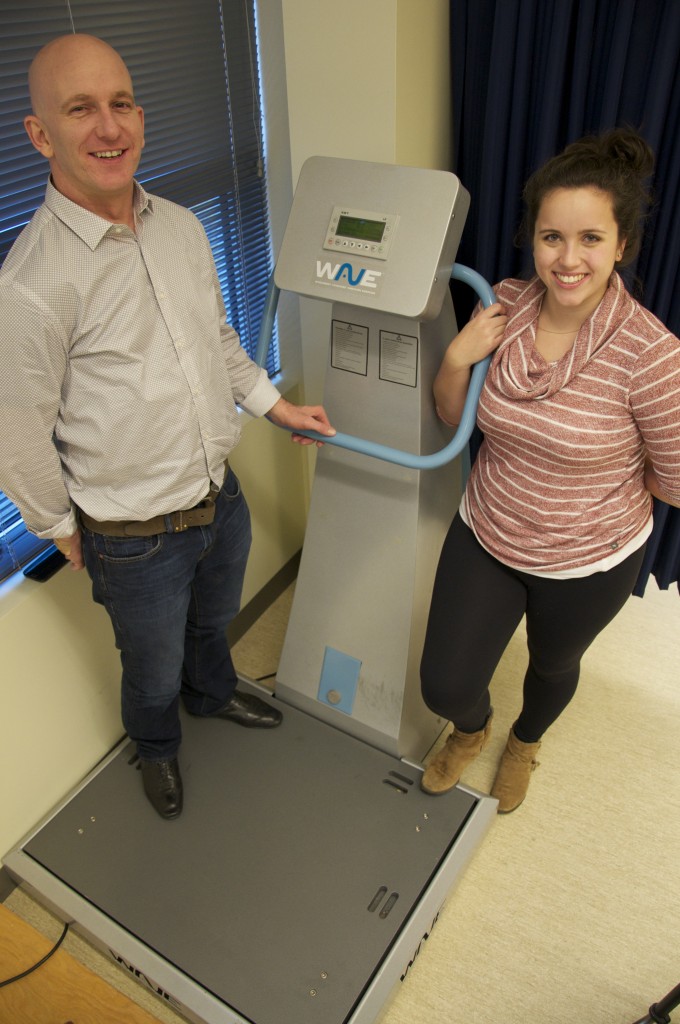
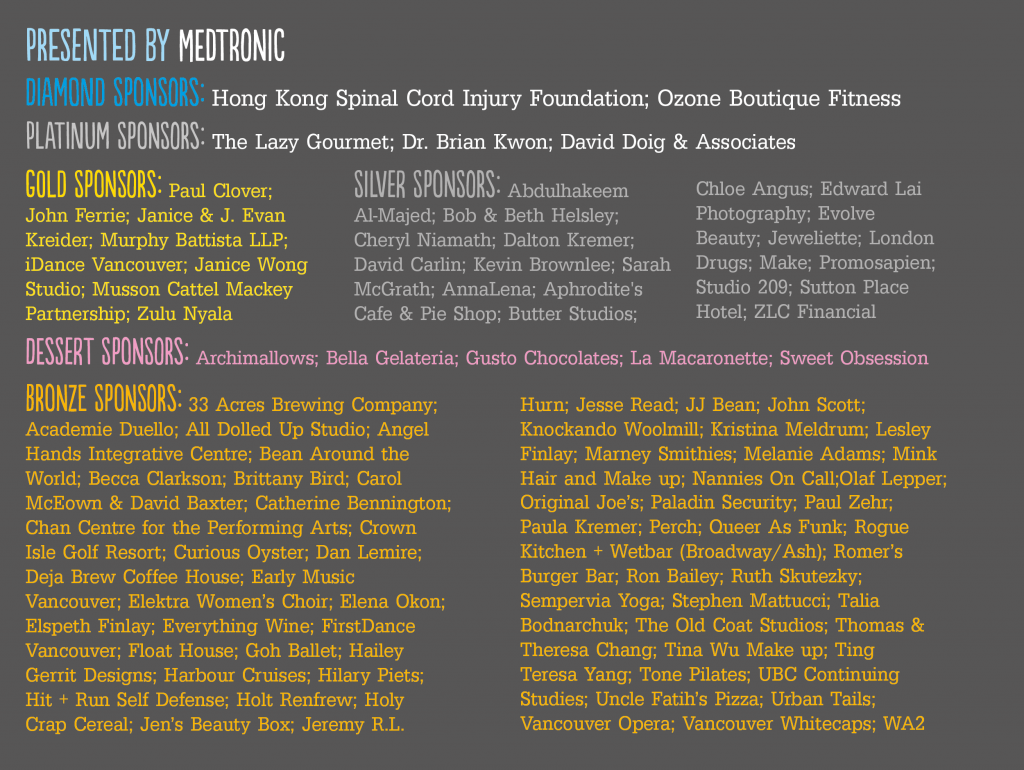




![The Krassioukov team arrives in Toronto to study the autonomic nervous systems of elite athletes and how spinal cord injury affects blood pressure, heart health, and brain function. (L to R: Cameron Gee, Jordan Squair, Dr. Aaron Phillips, Dr. Andrei Krassioukov [missing: Dr. Katharine Currie]).](http://icord.org/wp-content/uploads/2015/11/Parapan-team.jpg)
